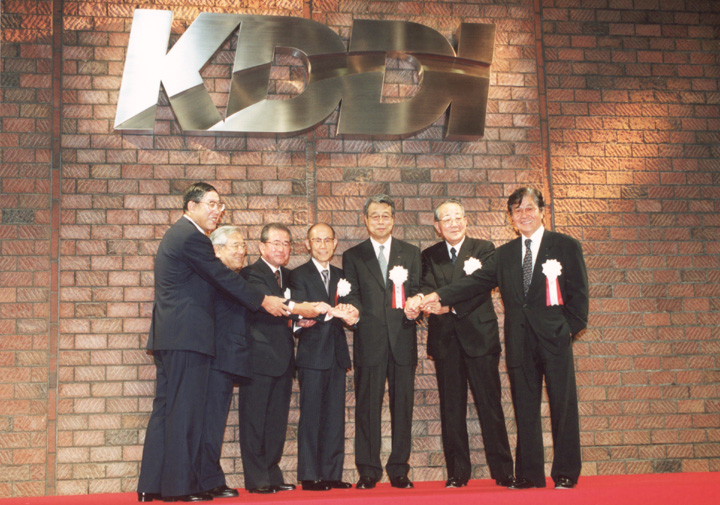Section 4. New Business Enterprises
Item 3. Entry into the Communications Field
Reorganization into KDDI
Of the three telecommunications enterprises in which TMC took part, IDC in the international communications field continued to expand its business, for example by increasing the number of mutually connected countries. In terms of financial results, IDC reported its first positive operating profit in fiscal 1992 (ended June 1993) and erased its cumulative loss by fiscal 1998 (ended March 1999). In contrast, TWJ in the domestic long-distance communications field and IDO in the mobile communications field continued to struggle for different reasons. Both companies kept increasing their capitalization in order to create operating funds, with the result that TMC's rates of capital contribution exceeded 50 percent and the two companies became consolidated TMC subsidiaries in 1998.
TWJ began its business laying private optical fiber telecommunications networks in Tokyo, Nagoya, and Osaka. However, because customers had to mutually connect with NTT, etc. except in major cities, charges increased and TWJ lost competitiveness. Meanwhile, IDO tripped in selecting a wireless method. Because the company initially assumed that mobile communications devices would be installed in cars, IDO placed importance on using the same handsets as NTT's and selected the same wireless method as NTT's. However, because of the U.S.-Japan trade friction that existed at the time, the two governments agreed that Japan would introduce Motorola's method, forcing IDO to adopt this method, as well. As a result, IDO had to make new capital investments before recouping its initial investment, leaving the company perpetually short of funds.
By the late 1990s, the telecommunications industry in Japan carried high capital risk, and companies began to reorganize in order to survive. First, TWJ was merged into Kokusai Denshin Denwa Co., Ltd. (KDD) in the international communications field in December 1998, forming the new KDD. As for IDC, Cable & Wireless Worldwide plc (C&W), which was a shareholder along with TMC, made an exceptional move and announced a hostile takeover bid in 1999. IDC became a subsidiary of C&W in May of the same year.
Furthermore, the new KDD embarked on further business consolidation and merged with TMC-backed IDO and the Kyocera-backed DDI, newly establishing KDDI in October 2000. As a result, KDDI occupied a position of general telecommunications enterprise next to NTT.
During this series of reorganizations, TMC gradually reduced its involvement in the telecommunications infrastructure business, which required massive capital outlay, and at the same time began to establish a structure that could utilize its know-how in the telecommunications field, such as IT utilization, for evolving its cars.



